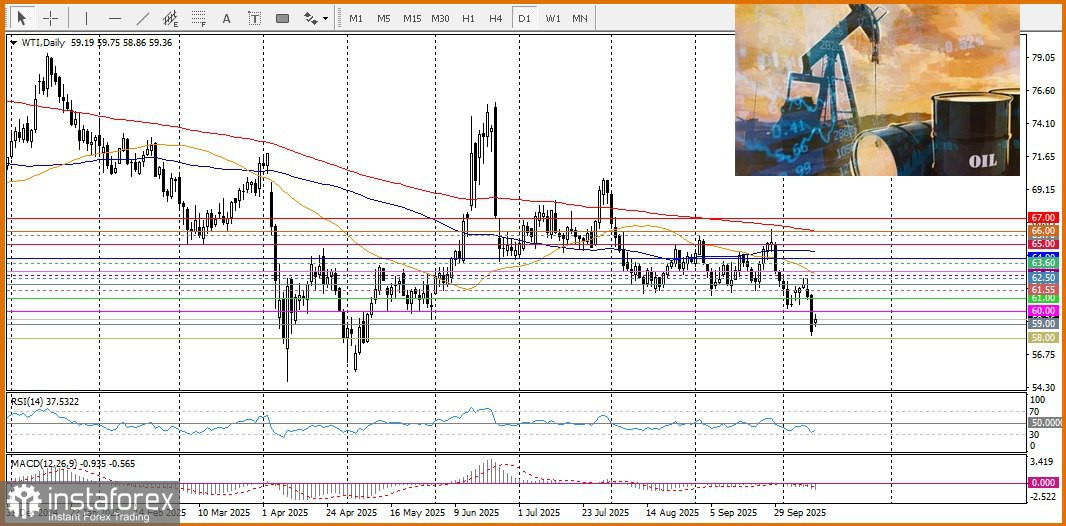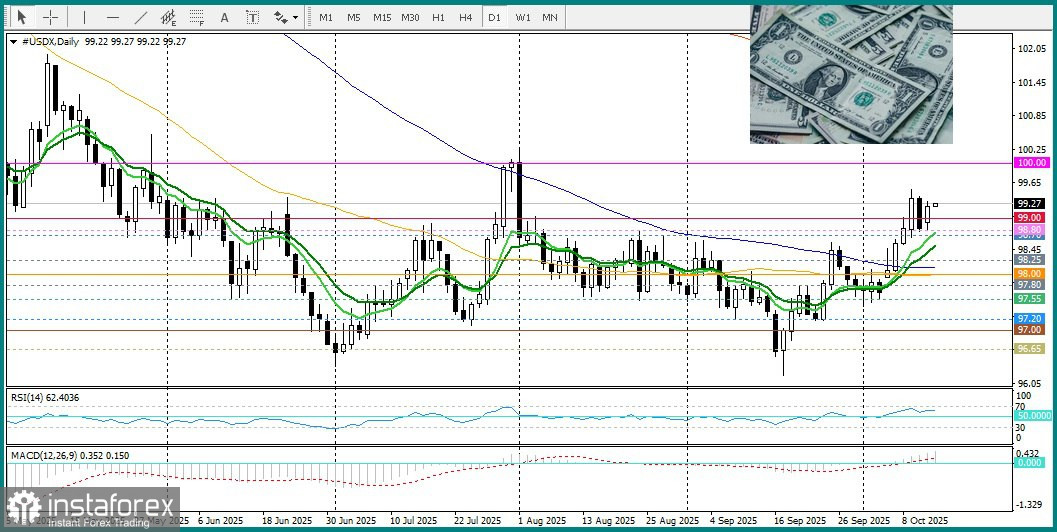
At the moment, the USD/CAD pair is trading above the 200-day simple moving average (SMA). Spot prices have surpassed the key 1.4000 level.
Oil prices opened the new week with a strong bullish gap, partially offsetting last week's decline in response to the softer tone from US President Donald Trump regarding the threat of imposing 100% tariffs on imports from China. This has reduced fears of an escalating trade conflict between the two countries while simultaneously raising concerns about a slowdown in demand.  Additionally, the Canadian employment report released on Friday exceeded expectations, showing an increase of 60,400 jobs in September. This supported the commodity-linked Canadian dollar and exerted restraining pressure on the USD/CAD pair.
Additionally, the Canadian employment report released on Friday exceeded expectations, showing an increase of 60,400 jobs in September. This supported the commodity-linked Canadian dollar and exerted restraining pressure on the USD/CAD pair.
At the same time, the US dollar is attracting buyers, stabilizing the corrective decline that began on Friday, as risk sentiment challenges demand for safe-haven assets — despite expectations that the Federal Reserve will cut interest rates two more times this year. Furthermore, the ongoing US government shutdown is a factor contributing to "bearish" sentiment toward the dollar; nevertheless, the bulls have not left the stage.
These circumstances, in turn, act as a limiting factor for the growth of the USD/CAD pair. However, the prevailing uncertainty over trade issues may discourage traders from making aggressive moves in either direction. From a technical perspective, last week's breakout above the 200-day SMA and the psychological 1.4000 level — for the first time since April — became an important signal for USD/CAD bulls. This suggests that any subsequent corrective pullbacks may be viewed as buying opportunities in the 1.3980–1.3975 level (near the 200-day SMA), while declines are likely to be limited by the 1.3940–1.3935 support level. It is also important to consider the accompanying low liquidity due to holidays in the US and Canada, which calls for caution in trading decisions amid an uncertain fundamental outlook.
From a technical perspective, last week's breakout above the 200-day SMA and the psychological 1.4000 level — for the first time since April — became an important signal for USD/CAD bulls. This suggests that any subsequent corrective pullbacks may be viewed as buying opportunities in the 1.3980–1.3975 level (near the 200-day SMA), while declines are likely to be limited by the 1.3940–1.3935 support level. It is also important to consider the accompanying low liquidity due to holidays in the US and Canada, which calls for caution in trading decisions amid an uncertain fundamental outlook.





















